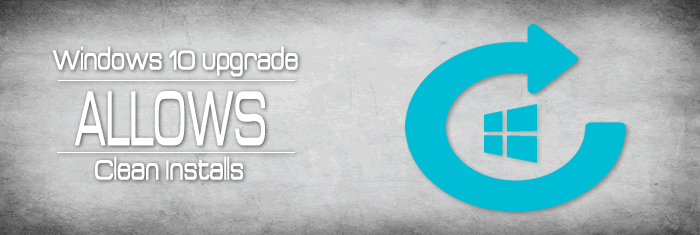Great News as Windows 10 upgrade allows clean installs! People who upgrade to Windows 10 for free during the first year of its release will be able to erase and restore their devices later and keep the free operating system.
Gabe Aul, an engineering general manager for Microsoft’s operating systems group, said in a tweet that people who upgrade a device to Windows 10 during the first year of its existence will be able to perform a clean reinstall of Windows 10 on the same device “any time.” It’s good news for upgraders who are concerned about what will happen to their devices a year after its July 29 launch.
Also, people won’t need to hold onto their Windows 7 or Windows 8.1 product key in order to perform the restoration. Their devices will reactivate themselves after being upgraded to Windows 10, Aul said.
That functionality will be underpinned by a Windows 10 feature that will allow people to reinstall the operating system and hold onto their files—or delete the files entirely and start fresh. Aul went on to say that the same deal will apply to people who restore from a .ISO disk image file rather than using the built-in reset service. All of that is good news for users, since performing a clean installation can sometimes help alleviate problems with a troubled computer.
However, people who plan to do significant hardware upgrades to their computers may still want to do so before the Windows 10 release. There’s still a question of how generous Microsoft’s upgrade policy will be, and whether the same activation will apply to a device that received a major upgrade like a new motherboard.
It’s not yet known how much Microsoft will charge for an upgrade license to Windows 10 after the promotional period expires. Getting a new license to the software will be costly, though: Windows 10 Home retails for $119, while the Pro version of the operating system will cost $199 new.
Microsoft’s permissive upgrade policy makes sense not only from a customer service standpoint but also because the company wants to get as many people as possible on Windows 10. Windows chief Terry Myerson told an audience at the company’s Build developer conference in April that Microsoft wants 1 billion devices running Windows 10 by the end of its 2018 fiscal year.


